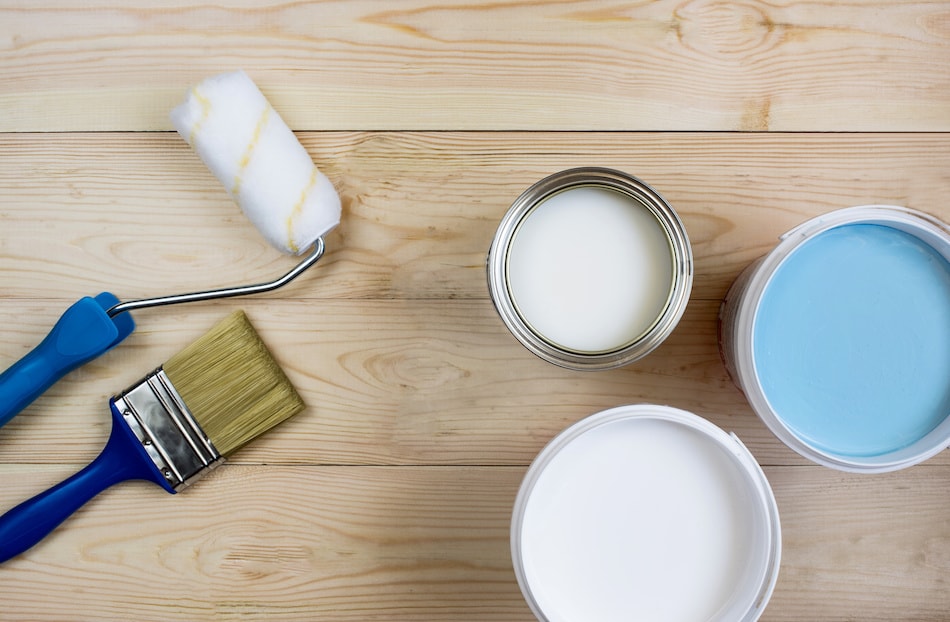5 Ways Fresh Interior Paint Can Help a Home Sell
Posted by Gary Ashton on Friday, January 4th, 2019 at 12:06pm.
 When homeowners decide to sell, one of the first considerations usually concerns making preparations to speed the selling process and help obtain the best possible price. But existing homes are somewhat like used cars - they often show signs of wear and tear that can devalue them or have design issues that will need to be overcome to get the most attention from qualified buyers.
When homeowners decide to sell, one of the first considerations usually concerns making preparations to speed the selling process and help obtain the best possible price. But existing homes are somewhat like used cars - they often show signs of wear and tear that can devalue them or have design issues that will need to be overcome to get the most attention from qualified buyers.
Some good examples of this include the presence of pet odors, stale cooking smells, or smoke, as well as worn or faded walls and ceilings or stained or damaged windowsills or trim. In addition, homes may also have negative design issues that may discourage buyer interest, such as rooms that appear too dark or very small, oddly constructed areas due to past additions or renovations, or ceilings that appear too low.
If you are preparing your existing home for sale and facing some of these problems, there may be a relatively inexpensive solution, and it might be as easy as adding a fresh coat of paint.
Need help with your next painting project? Check out our friends at Nash Painting!
Neutralizing Lingering Odors
When buyers enter and view a home they are interested in, whether it is located in the Goodlettsville area or any other, lingering odors are one of the first things they are likely to notice. Smells that may not even be noticeable to the people who live there can seem unpleasant to people not used to them. If the home has lingering odors, such as stale cooking smells, pet odors, or traces of cigarette smoke, buyers may even lose interest in the home and seek a different one instead.
Sellers who want to avoid this type of problem should consider repainting their home's interior using one of the newer paint, primer, or sealant products designed specifically to contain odors when applied to walls, ceilings, and surfaces in the home. These kinds of paint are typically available at most home improvement and paint stores.
Brightening Dark Spaces
Another way paint can be an inexpensive fix for a home problem that might otherwise cause buyers to lose interest is to lighten dark, shadowy spaces.
To brighten these areas and maximize existing light, sellers should:
- clear away clutter and excess furniture to create a more open feel
- paint walls, ceilings, and trim in bright white or a light color that will help to maximize light
- remove heavy, dark window coverings and replace them with sheer panels, light-colored blinds, or leave windows uncovered to allow maximum light to filter into the room
- place mirrors or light-reflecting surfaces where they will best gather and reflect incoming natural light
Adding Cosmetic Appeal
Most Nashville historic homes, especially those that have undergone extensive remodeling or enlargement, have at least one oddly shaped room or area that may confuse buyers who are left wondering how they might best utilize the space. Examples of these include rooms with sharply sloped walls or those with ceilings comprised of multiple angles.
While it is usually not feasible to demolish these areas and completely renovate them, sellers can carefully select and apply paint to help make these areas much more appealing.
Making Ceilings Appear Higher
Rooms in which the ceilings appear to be too low can make buyers uncomfortable with the home, even though they can comfortably move about in the space without having to duck. But through the creative use of color and painting techniques, sellers can draw the buyer's eye upward and create an illusion of much more height in these areas.
An excellent option for making ceilings appear higher is to use different colors for the ceiling and walls, bringing the ceiling color several inches down onto the walls. A band of contrasting color or trim is then placed at the point where the two colors meet, creating a focal point that encourages the viewer to look upward, helping to create the feel of a much higher ceiling. Other good ideas include painting vertical stripes onto walls or using a mirror-like finish on low ceilings to amplify light and give the appearance of more vertical space.
Healing Minor Damage
Preparing the existing home for sale also means healing nicks, gouges, and scratches inflicted over time through normal family use. While this type of damage is usually cosmetic, it can create an impression of poor maintenance that sellers should work to avoid. A coat or two of good quality paint may be all that is needed to fix most minor scratches and abrasions. Deeper scratches may require filling with a good quality wood filler and then sanding the repaired area smoothly before painting.
Using the Most Appealing Paint Colors Throughout the House
Colors can affect mood and perception of space, so it is important to use the most appealing colors throughout the house. Although overall color preference is subjective, most people feel most comfortable in rooms filled with predominantly neutral or cool tones. Blue and green hues, for example, can help create a calm, relaxing atmosphere for all to enjoy.
However, when used strategically in the right rooms, warm tones can brighten up space and create an upbeat atmosphere. As a rather cheery and energetic color, yellow works well to set a positive mood for the day when used in kitchens. Light colors, like yellow, can also help make a small kitchen space look and feel much bigger.
Therefore, to decide the most appealing paint colors to use, homeowners must determine how they will utilize each room in the house and the mood they want to set there. By choosing the best paint colors for their household, homeowners can maximize their living space's visual appeal and comfort.
For more guidance on making your home as appealing as possible to prospective buyers, sellers can use the advice of their listing agent. Because real estate professionals work with buyers, sellers, builders, and repair contractors regularly, they can offer excellent guidance to help sellers make their homes look their best.

Gary Ashton
The Ashton Real Estate Group of RE/MAX Advantage
The #1 RE/MAX team in the World!
